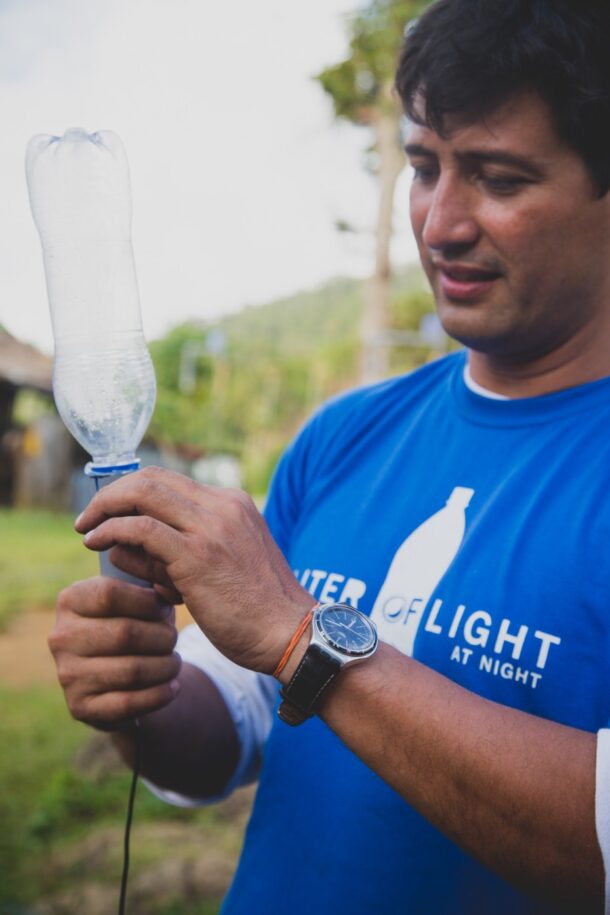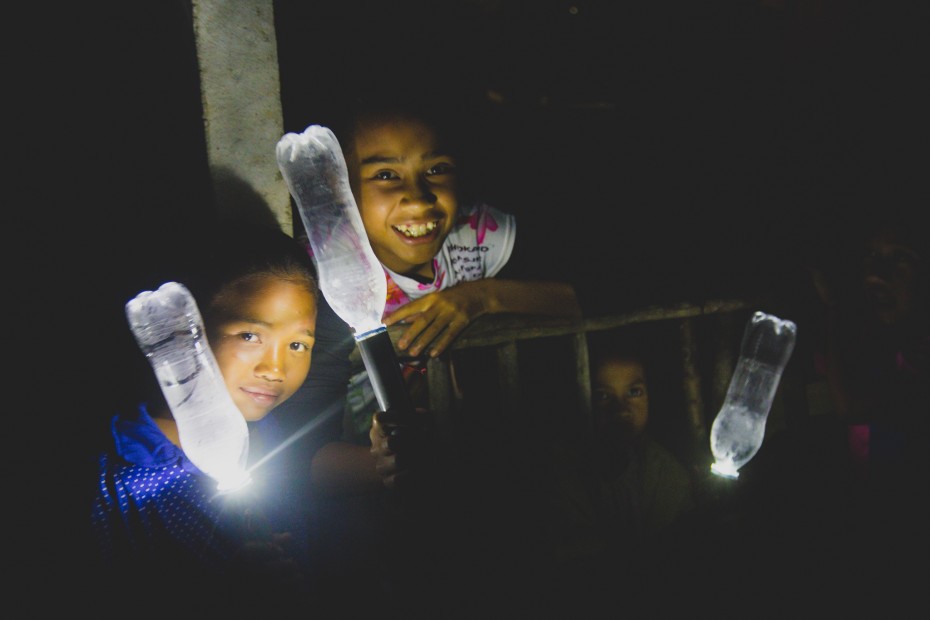ACROSS the world, 1.4 billion people live without lights. When night falls for these people, so does total darkness. It might sound like a world away from Malaysia, but even here, access to electricity is still scarce in rural villages.
In February, Zikry Kholil, co-founder of Incitement, an organisation that organises inspiring events; and Illiac Diaz, founder of global sustainable lighting project Liter of Light, got to talking about the situation.

Diaz’s Liter of Light foundation has helped put 480,000 solar-powered house and street lights in rural and disaster-stricken areas around the world. – Photo: Joe Kiat
Four months later, I found myself at the Asia Pacific University (APU) in Bukit Jalil on a sunny Saturday morning with 50 very eager university students who had volunteered to build 50 solar-powered water bottle lamps from scratch.
This was Liter of Light’s pilot project in Malaysia, a remarkable idea that involved roping in university students to help put together sustainable street lamps for 40 houses in the remote village of Kampung Lemoi in Cameron Highlands. The villagers of Kampung Lemoi had lived for years using only traditional light sources like candles, oil lamps and bonfires.
Diaz, a Harvard grad from the Philippines, said youth-driven social enterprises can make tangible changes in eradicating energy poverty. And he certainly knows what he’s talking about.
Liter of Light was only formed two and a half years ago but has already been integral in putting nearly 500,000 house and street lights in countries like the Philippines, Turkey, Syria, Indonesia, Kenya and Italy.
“That’s the secret – if we open-source it, if we empower youth and teach them within the day that they can actually build 50 street lights with people who have never built one before, then we have proven our point.
“And 50 street lights is one village, so we’re moving away from this idea that you have to be a big philanthropist to light up a village,” said Diaz.
The students were clearly caught up in the spirit of this empowering movement too. The task of building the solar-powered bottle lamps wasn’t easy, as it involved measuring and hand sawing PVC pipes, using a hot gun to bend it into shape, then drilling holes into the pipes and screwing pieces together as well as soldering and connecting wires to a circuit. Work began at 10am, and the first fully constructed street lamp only came together at 4pm.

Students were divided into multiple groups and had to take on tasks like measuring and hand sawing PVC pipes. The project began at 10pm and the first fully constructed lamp was only completed at 4pm! – YAP CHEE HONG/The Star
But the excitement and sense of achievement at the event was palpable. Tunku Norhabibah, 18, a student at INTEC College who volunteered at the event, said: “Liter of Light is so exciting because you can actually see the end product of this event. I’m very happy I signed up for this – I’ve never seen so many people work together to get something done. But I believe if we start now, we will know what to do for the future.”
Muhaimin Shah, 20, another INTEC student, thinks young people should be involved in these sort of labour-intensive tasks, because they are in the best physical shape of their life. “Young people are fit and creative, so it’s good for us to do this,” he said.
For Raafi M. Maatin, 22, an international student from Bangladesh at APU, the Malaysian Liter of Light project has inspired him to make changes in his homeland. “These are ideas that can be used anywhere and I plan to use it to help people in Bangladesh,” he said.
The solar-powered bottle lamps that the students built aren’t much to look at – basically plastic bottles suspended from PVC pipes – but they’re actually very durable. The solar panels absorb sunlight during the day, and the lights come on as soon as night falls. It generates zero electricity cost and can last for four years before the batteries need to be replaced.
While the residents of Kampung Lemoi were the happiest beneficiaries of this project (their radiant smiles said it all), Zikry and Diaz have plans to expand the Liter of Light project across other rural areas in Malaysia. To date, they have already lit up two other villages in Cameron Highlands, and have projects planned in Sabah, Sarawak and Kelantan. Their goal is to make and install 500 lights by the end of October.

The children of Kampung Lemoi are all smiles as they stand next to their brand new solar powered water bottle lamps. Kampung Lemoi had long been plunged in darkness, and villagers resorted to old-fashioned light sources like bonfires to get some light. – Photo: Joe Kiat
What’s interesting about the project, according to Zikry, is that students involved in the pilot project will become ambassadors of light. This means they will be entrusted with empowering and teaching students involved in other Liter of Light projects, generating a chain reaction where knowledge is continuously transferred.
“Empowering students is the best way you can help facilitate this project. It’s a great experience for students, doing something that really matters and seeing immediate impact. They get to see how social innovation can help people with real problems,” he said.







Leave a reply